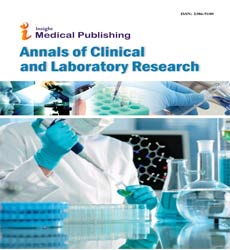Abstract
Association of Liver Function Tests, Lipid Profile and Glycemic Status in a Cohort of Patients with Type 2 Diabetes Mellitus in Sri Lanka
Type 2 Diabetes Mellitus (T2DM) an endocrine disorder causing chronic hyperglycaemia due to insulin resistance and deficiency leading to multi-organ damage and disturbances in carbohydrate, lipid, and protein metabolism. The objectives were: To determine and compare the association between glycated haemoglobin (HbA1c) LP and LFT in T2DM patients. To analyze the association between LFT and LP in T2DM patients and compare within sexes. A retrospective analytical study performed at the department of pathology. Data of 201 patients ≥ 30 years with T2DM was obtained and statistically analyzed using (SPSS) version 20, descriptive statistical methods, and Pearson’s Correlation. In the total population (136 females, 65 males) between 31 to 83yrs, the LFTs and LP were high. Bilirubin was normal. In patients with HbA1c <7, serum ALP and TG remained normal but serum LDL was high. In those with HbA1c>7 liver enzymes and lipid profile were high. LFTs and LP of both groups revealed a significant positive correlation for ALP (p=0.000), TG (p=0.026) and VLDL (p=0.026) with a negative co-relation for bilirubin (p=0.020). HbA1c of both groups were statistically significant (p-value 0.000). Pearson’s co-relation revealed a positive co-relation between HbA1C and VLDL and a negative co-relation between bilirubin and HbA1c. Serum ALT, bilirubin statistically higher in males (p=0.006). Serum ALP (p=0.018), HDL (p=0.040) higher in females. Positive correlation between HbA1c, ALP, TG and VLDL indicates progression of disease and probability of cardiovascular complications. The negative correlation between HbA1c and bilirubin indicates good control and may be useful in monitoring control.
Author(s):
Kariyawasan CC*, Balasuriya BLT, Ranatunga SACD, Dissanayaka DMC, Herath SRGP
Abstract | Full-Text | PDF
Share this

Annals of Clinical and Laboratory Research peer review process verified at publons
Abstracted/Indexed in
- Google Scholar
- Genamics JournalSeek
- China National Knowledge Infrastructure (CNKI)
- CiteFactor
- Directory of Research Journal Indexing (DRJI)
- Publons
- Secret Search Engine Labs
- Euro Pub
Open Access Journals
- Aquaculture & Veterinary Science
- Chemistry & Chemical Sciences
- Clinical Sciences
- Engineering
- General Science
- Genetics & Molecular Biology
- Health Care & Nursing
- Immunology & Microbiology
- Materials Science
- Mathematics & Physics
- Medical Sciences
- Neurology & Psychiatry
- Oncology & Cancer Science
- Pharmaceutical Sciences


